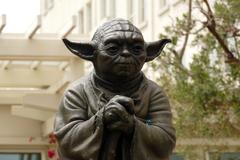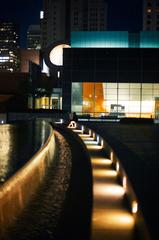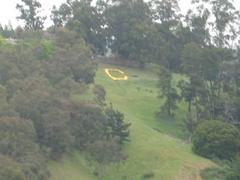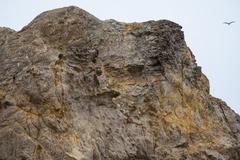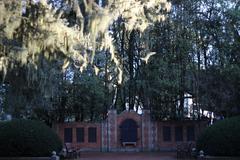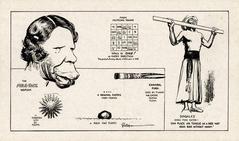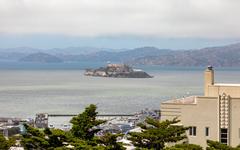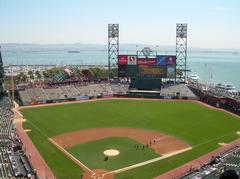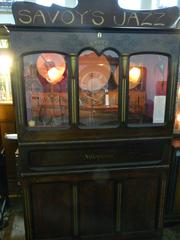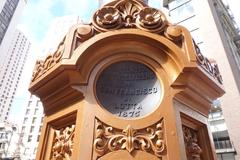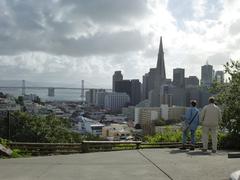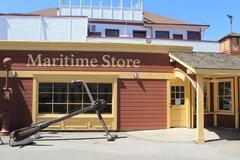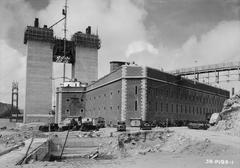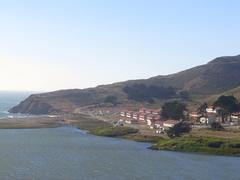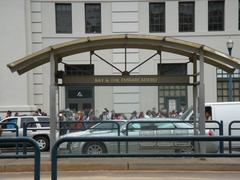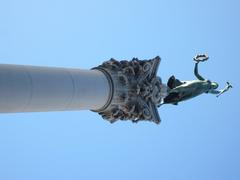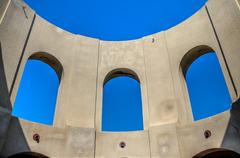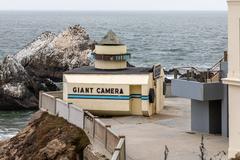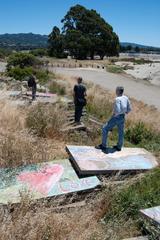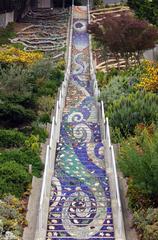
Kong Chow Temple Visiting Hours, Tickets, and Historical Significance in San Francisco
Date: 18/07/2024
Introduction
Nestled in the heart of San Francisco’s bustling Chinatown, the Kong Chow Temple stands as a prominent symbol of Chinese-American heritage and cultural resilience. Established in 1857 by immigrants from the Xinhui district of Guangdong province in China, the temple served as a spiritual and communal haven for early Chinese settlers in the United States (San Francisco Chinatown). Through its rich history, the temple has evolved from a modest wooden structure to a significant cultural landmark, embodying the artistic and architectural essence of traditional Chinese craftsmanship. Dedicated to Guan Di, a revered figure in Chinese culture known for his loyalty, righteousness, and martial prowess, Kong Chow Temple remains a vibrant center for religious worship, cultural education, and community gatherings (Chinatown San Francisco).
As one of the oldest Chinese temples in the United States, it not only reflects the historical journey of Chinese immigrants but also plays a crucial role in preserving and promoting their cultural and religious traditions (San Francisco Heritage). This comprehensive guide aims to provide visitors with an in-depth understanding of the temple’s significance, practical visitor information, and tips for an enriching experience.
Table of Contents
- Introduction
- Origins and Establishment
- Early Years and Community Role
- Architectural Evolution
- Cultural and Religious Significance
- Impact of Immigration Policies
- Preservation and Modern-Day Relevance
- Community Engagement and Education
- Challenges and Future Prospects
- Visitor Information
- Travel Tips
- Nearby Attractions
- FAQ
- Conclusion
Origins and Establishment
Kong Chow Temple, located in San Francisco’s Chinatown, is one of the oldest Chinese temples in the United States. Established in 1857 by immigrants from the Xinhui district of Guangdong province, the temple was named after the Kong Chow district, reflecting the heritage of its founders (San Francisco Chinatown).
Early Years and Community Role
In its early years, Kong Chow Temple served as a vital center for the Chinese community in San Francisco. It provided not only a place for religious worship but also a social hub where immigrants could find support and maintain their cultural identity. The temple played a crucial role in helping new arrivals navigate the challenges of life in America, offering assistance with housing, employment, and legal matters. It also hosted traditional festivals and ceremonies, which helped to strengthen community bonds and preserve cultural traditions (Chinese Historical Society of America).
Architectural Evolution
The original structure of Kong Chow Temple was a modest wooden building. However, it underwent significant changes over the years, reflecting the evolving needs and aspirations of the community. In 1906, the temple was destroyed in the Great San Francisco Earthquake and subsequent fire. The community quickly rallied to rebuild, and by 1909, a new temple was constructed at its current location on Stockton Street. This new building featured traditional Chinese architectural elements, including ornate carvings, colorful murals, and a pagoda-style roof, symbolizing the resilience and cultural pride of the Chinese community (San Francisco Heritage).
Cultural and Religious Significance
Kong Chow Temple is dedicated to Guan Di (also known as Guan Yu), a revered historical figure in Chinese culture known for his loyalty, righteousness, and martial prowess. Guan Di is worshipped as a deity of war, wealth, and protection. The temple houses a statue of Guan Di, along with other deities, and serves as a site for various religious rituals and ceremonies. These include offerings, incense burning, and the celebration of important festivals such as the Lunar New Year and the Mid-Autumn Festival (Chinatown San Francisco).
Impact of Immigration Policies
The history of Kong Chow Temple is closely intertwined with the broader history of Chinese immigration to the United States. During the late 19th and early 20th centuries, Chinese immigrants faced significant discrimination and exclusionary policies, such as the Chinese Exclusion Act of 1882. Despite these challenges, the temple remained a steadfast symbol of cultural resilience and community solidarity. It provided a sanctuary where Chinese immigrants could practice their traditions and find solace amidst the adversities they faced (National Park Service).
Preservation and Modern-Day Relevance
In the latter half of the 20th century, efforts to preserve and restore Kong Chow Temple gained momentum. Recognizing its historical and cultural significance, the temple was designated a San Francisco Landmark in 1986. Restoration projects have aimed to maintain the temple’s architectural integrity while ensuring it remains a vibrant center for the community. Today, Kong Chow Temple continues to serve as a place of worship, cultural education, and community gathering, attracting both local residents and tourists interested in exploring the rich heritage of San Francisco’s Chinatown (San Francisco Planning Department).
Community Engagement and Education
Kong Chow Temple actively engages with the broader community through various educational and cultural programs. These initiatives aim to promote understanding and appreciation of Chinese culture and history. The temple hosts guided tours, cultural workshops, and educational events that highlight the significance of traditional practices and the contributions of the Chinese community to San Francisco’s development. By fostering cross-cultural dialogue and learning, the temple plays a crucial role in bridging cultural gaps and promoting inclusivity (Chinese Culture Center of San Francisco).
Challenges and Future Prospects
Despite its enduring significance, Kong Chow Temple faces ongoing challenges, including the pressures of urban development and the need for continuous maintenance and preservation. The temple’s leadership and community supporters are committed to addressing these challenges through fundraising efforts, advocacy, and strategic planning. Looking ahead, the temple aims to enhance its role as a cultural and historical landmark, ensuring that future generations can continue to connect with and celebrate their heritage (San Francisco Chronicle).
Visitor Information
Opening Hours: Kong Chow Temple is open to visitors daily from 9:00 AM to 5:00 PM. It is recommended to check the temple’s official website for any changes in visiting hours or special closures.
Tickets: Admission to Kong Chow Temple is free, but donations are welcome to support the temple’s maintenance and community programs.
Accessibility: The temple is wheelchair accessible. Limited street parking is available, and public transportation options are convenient, with several bus lines stopping nearby.
Travel Tips
Best Time to Visit: The best time to visit Kong Chow Temple is during weekdays when it is less crowded. Visiting during traditional festivals like the Lunar New Year can provide a unique cultural experience but expect larger crowds.
How to Get There: Kong Chow Temple is located at 855 Stockton Street in San Francisco’s Chinatown. It is easily accessible by public transportation, with the Powell Street BART station and several Muni bus lines within walking distance.
Nearby Attractions
While visiting Kong Chow Temple, consider exploring other historical and cultural attractions in San Francisco’s Chinatown, such as:
- Golden Gate Fortune Cookie Factory: Watch how fortune cookies are made and taste fresh samples.
- Chinatown Heritage Walk: A guided walking tour that highlights the history and landmarks of Chinatown.
- Chinese Historical Society of America Museum: Learn more about the history and contributions of Chinese Americans.
FAQ
What are the visiting hours for Kong Chow Temple? Kong Chow Temple is open daily from 9:00 AM to 5:00 PM.
Are there guided tours available at Kong Chow Temple? Yes, the temple offers guided tours that provide insights into its history, architecture, and cultural significance. Check the temple’s website or contact them directly for tour schedules.
What is the significance of Guan Di at Kong Chow Temple? Guan Di, also known as Guan Yu, is a revered figure in Chinese culture known for his loyalty, righteousness, and martial prowess. He is worshipped at Kong Chow Temple as a deity of war, wealth, and protection.
Conclusion
Kong Chow Temple stands as a testament to the resilience, cultural pride, and community spirit of San Francisco’s Chinese population. From its humble beginnings in the mid-19th century to its present-day status as a cherished landmark, the temple has played a pivotal role in preserving and promoting Chinese cultural and religious traditions. As it continues to evolve and adapt to contemporary challenges, Kong Chow Temple remains a beacon of cultural heritage and community solidarity in the heart of San Francisco’s Chinatown.
For more information on Kong Chow Temple, you can visit their official website or explore additional resources on San Francisco Chinatown. Stay updated on events and activities by following their social media channels.
References
- San Francisco Chinatown, n.d., San Francisco Chinatown
- Chinese Historical Society of America, n.d., CHSA
- San Francisco Heritage, n.d., San Francisco Heritage
- Chinatown San Francisco, n.d., Chinatown San Francisco
- National Park Service, n.d., NPS
- San Francisco Planning Department, n.d., San Francisco Planning Department
- San Francisco Chronicle, n.d., San Francisco Chronicle

